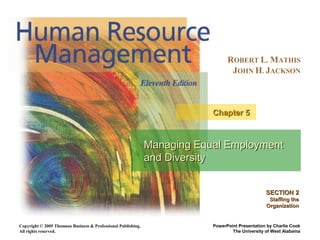This document discusses managing equal employment and diversity in organizations. It covers topics like affirmative action, managing employees of different genders, ages, disabilities, religions and managing workplace diversity. The key goals of diversity management discussed are reducing discrimination complaints and costs, improving organizational performance, and enhancing recruiting and retention through a diverse workforce.































